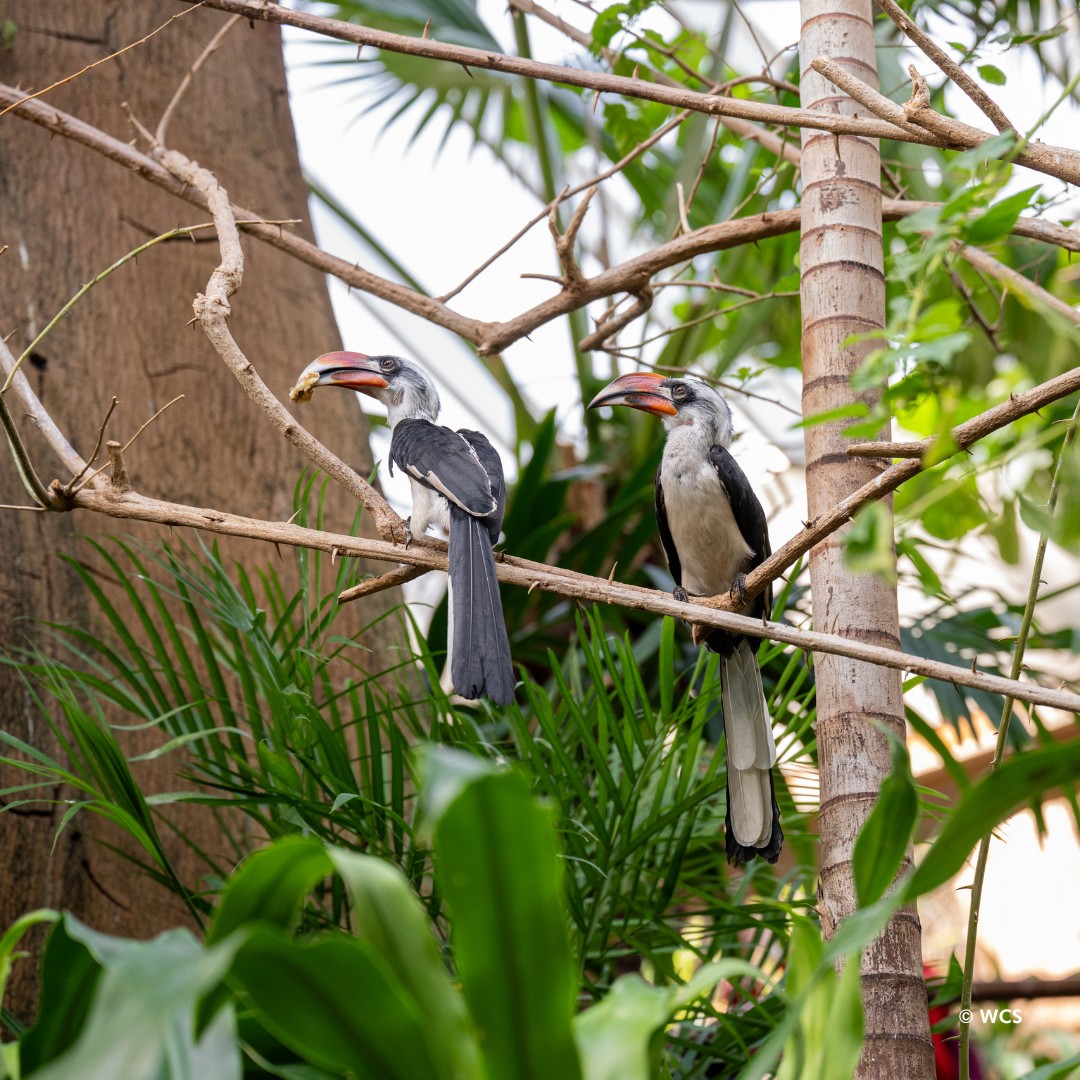- Introduction to Von der Decken’s hornbills and their significance in conservation
- Detailed overview of the species’ natural habitat and physical characteristics
- The role of zoos in breeding programs and species conservation
- The relocation of hornbills between Wildlife Conservation Society parks
- Collaborative efforts and public engagement in wildlife conservation
Von der Decken’s hornbills, native to the dry savannas of eastern Africa, have become a beacon for conservation initiatives. Their recent transfer from the Bronx Zoo to Central Park Zoo underscores significant conservation efforts aimed at sustaining biodiversity and educating the public.
These hornbills are distinguished by their striking sexual dimorphism. Males boast large, red bills, a feature that contrasts vividly with the sleek, black bills of females. This differentiation not only plays a role in mating but also helps researchers and visitors easily identify the birds. Their black and white plumage, paired with large, expressive eyes, makes them captivating subjects for both study and observation.
Adapted to arid regions, Von der Decken’s hornbills are often found in areas with scattered trees and open spaces, where they forage for insects and small fruits. Their ecological role is vital, as they aid in seed dispersal and insect population control. Understanding their habitat preferences and dietary needs is crucial for designing effective zoo environments that mimic their natural surroundings.
Zoos play an indispensable role in wildlife conservation. Cooperative breeding programs are a core component of modern zoological management. These programs not only aim to maintain genetic diversity but also serve as a safeguard against population decline in the wild. By breeding hornbills and other species in captivity, zoos act as a genetic reservoir.
The Bronx Zoo and Central Park Zoo’s recent transfer of two male hornbills is part of this collaborative vision. Such relocations are carefully planned to optimize genetic diversity and foster healthy populations within managed care. These moves also help balance the age and sex ratio in captive groups, promoting natural breeding behaviors.
Conservation extends beyond breeding. Public engagement is essential to fostering a conservation ethic. Zoos are uniquely positioned to educate visitors about the intricacies of wildlife conservation. The Tropic Zone exhibit at Central Park Zoo allows visitors to observe these hornbills up close, sparking interest and empathy. Photography, like that of WCS photographer Terria Clay, helps to further captivate and educate by showcasing the beauty and uniqueness of these birds.
The Wildlife Conservation Society (WCS) demonstrates a model for global conservation efforts. They implement community-based strategies that combine scientific research, education, and sustainable management. Through partnerships with local and international entities, they address challenges such as habitat destruction and climate change that threaten hornbills and countless other species.
The Central Park Zoo not only showcases these magnificent birds but also serves as a platform for broader conversations about biodiversity and environmental sustainability. By highlighting the plight of Von der Decken’s hornbills, zoos inspire action, encouraging individuals and communities to contribute to conservation efforts.
Ultimately, the presence of Von der Decken’s hornbills at the Central Park Zoo is more than an exhibit attraction. It represents a commitment to preserving species, engaging the public, and promoting a sustainable future for wildlife across the globe. Through continued collaboration and dedication, the goal of safeguarding biodiversity becomes increasingly attainable.
*****
Source Description
There are two new Von der Decken’s hornbills on the block! The two males were hatched at the Bronx Zoo in 2023 and were transferred to Central Park Zoo in December 2024. We often transfer animals between our Wildlife Conservation Society parks to support collaborative breeding programs and raise awareness for conservation of specific species. Von der Decken’s hornbills are native to dry regions of eastern Africa. The males have large, red bills, whereas the females’ are black. You can see them in the Tropic Zone.
📸: WCS photographer, Terria Clay


